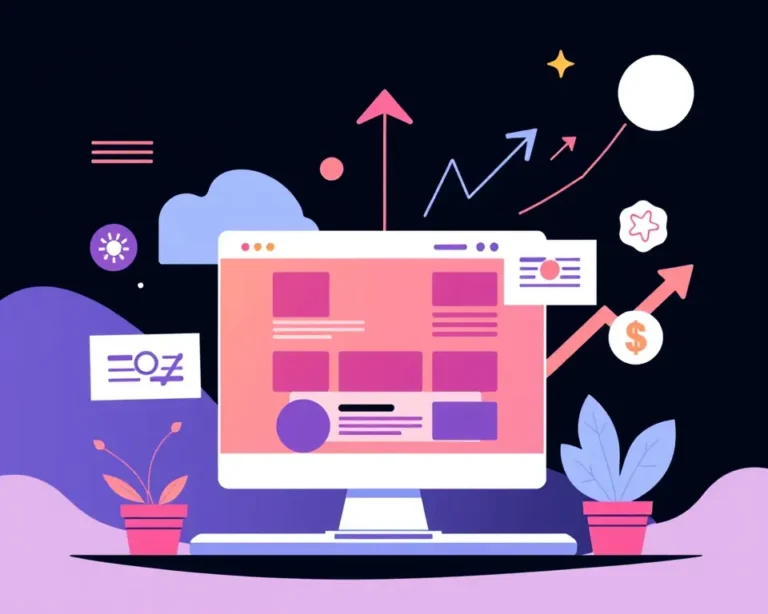Your website’s homepage is often the first interaction a potential customer has with your brand. It’s your digital storefront, the initial handshake, and the elevator pitch all rolled into one. In 2025, with ever-decreasing attention spans and a plethora of online options, a compelling homepage is more critical than ever. This article delves into the essential elements of an effective homepage, offering best practices and actionable tips to create a captivating online experience that converts visitors into loyal customers.
Why Your Homepage Matters
The homepage serves several crucial functions:
- First Impression: It forms the visitor’s initial perception of your brand.
- Navigation Hub: It guides users to the most important sections of your website.
- Value Proposition: It communicates what your business offers and why it’s unique.
- Conversion Driver: It encourages visitors to take desired actions, such as making a purchase or signing up for a newsletter.
- Brand Building: It reinforces your brand identity and messaging.
A well-designed homepage can significantly impact user engagement, lead generation, and ultimately, your bottom line.
Key Elements of a High-Performing Homepage
Let’s explore the essential components that contribute to an effective homepage:
1. Clear Value Proposition
Your homepage should immediately answer the following questions for visitors:
- What do you do?
- Who do you serve?
- Why should I choose you?
Highlight your unique selling proposition (USP) prominently, ideally within the headline and supporting subtext. Use concise and impactful language that resonates with your target audience. Avoid jargon and focus on the benefits you offer.
2. Compelling Headline and Supporting Visuals
A captivating headline grabs attention and accurately communicates the benefits customers receive from your business. Pair it with supporting visuals, such as high-quality photos, videos, or graphics, to further engage visitors and direct them to take action. For products, showcase them in action to tell a story.
- Headline Best Practices: Keep it short, catchy, and benefit-oriented.
- Visual Best Practices: Use relevant, high-resolution images or videos that align with your brand. Consider using visuals that direct the viewer’s eye toward important elements like buttons or text.
3. Intuitive Navigation
Make it easy for visitors to find what they’re looking for. Implement a clear and concise navigation menu, typically placed at the top of the page. Limit the number of top-level navigation items to around five, with related pages organized under them.
- Navigation Best Practices:
- Use clear and descriptive labels.
- Ensure the navigation is consistent across all pages.
- Provide a clear way to return to the homepage from any page.
- Consider a “sticky” navigation that remains visible as the user scrolls.
4. Strategic Calls-to-Action (CTAs)
Guide visitors towards desired actions by including clear and compelling CTAs. Use action-oriented language and visually distinct buttons to encourage clicks. Place CTAs strategically throughout the homepage, both above and below the fold (the area visible without scrolling).
- CTA Best Practices:
- Use strong action verbs (e.g., “Get Started,” “Learn More,” “Contact Us”).
- Make the button visually prominent with contrasting colors and sufficient size.
- Ensure the CTA is relevant to the surrounding content.
- Consider using multiple CTA types to cater to different user needs.
5. Mobile-First Design
With a significant portion of internet traffic coming from mobile devices, it’s crucial to adopt a mobile-first approach to homepage design. Ensure your homepage is responsive and adapts seamlessly to different screen sizes.
- Mobile Best Practices:
- Use a simplified layout and navigation.
- Optimize images for mobile devices to reduce loading times.
- Enlarge touch targets for easy interaction.
- Test the mobile version thoroughly to ensure a smooth user experience.
6. Social Proof and Trust Signals
Build trust and credibility by showcasing social proof, such as customer testimonials, reviews, and case studies. Display trust signals like security badges, certifications, and awards to reassure visitors.
- Social Proof Best Practices:
- Feature genuine testimonials with real customer names and photos.
- Highlight positive reviews from reputable sources.
- Showcase data and statistics that demonstrate your success.
- Display trust badges from recognized security providers.
7. Visual Hierarchy and White Space
Create a clear visual hierarchy to guide users’ attention to the most important content. Use size, color, and spacing effectively to prioritize elements. Employ white space (also known as negative space) to give your content room to breathe and make it easier for visitors to focus.
- Visual Hierarchy Best Practices:
- Use larger fonts for headlines and smaller fonts for body text.
- Use contrasting colors to highlight important elements.
- Place key elements above the fold.
8. Fast Loading Speed
Optimize your homepage for fast loading speed to prevent visitors from abandoning your site. Slow loading times can lead to frustration and a negative user experience.
- Speed Optimization Best Practices:
- Optimize images by compressing them and using appropriate file formats.
- Minimize the use of scripts and plugins.
- Use a Content Delivery Network (CDN) to distribute your content globally.
- Test your website’s loading speed using tools like Google PageSpeed Insights.
9. Accessibility
Ensure your homepage is accessible to everyone, including people with disabilities. Follow Web Content Accessibility Guidelines (WCAG) to create a website that is usable by all.
- Accessibility Best Practices:
- Provide alternative text for images.
- Use sufficient color contrast.
- Ensure keyboard navigation is possible.
- Provide captions for videos.
10. Footer Design
Think of the footer as a user experience safety net. It’s the last chance to help visitors who haven’t found what they’re looking for.
- Footer Best Practices:
- Include links to top pages, privacy policy, sitemap, and social media icons.
- Add trust seals and awards.
- Include an email signup CTA.
The Psychology of Homepage Design
Understanding the psychological principles behind web design can significantly enhance your homepage’s effectiveness.
- Color Psychology: Use colors strategically to evoke specific emotions and actions. For example, blue can promote trust, while red can create a sense of urgency.
- Visual Hierarchy: Guide users’ attention by organizing elements in a way that aligns with their expectations.
- Gestalt Principles: Utilize principles like proximity, similarity, and closure to create visual relationships and guide user perception.
- Cognitive Load: Minimize the amount of mental effort required to process information by keeping the design clean and simple.
- Hick’s Law: Reduce the number of choices to avoid overwhelming visitors and delaying their decision-making process.
What to Avoid on Your Homepage
Here are some common pitfalls to avoid when designing your homepage:
- Clutter: Avoid overwhelming visitors with too much information or too many elements.
- Slow Loading Times: Optimize your homepage for speed to prevent frustration.
- Poor Navigation: Make it easy for visitors to find what they’re looking for.
- Irrelevant Visuals: Use images and videos that are relevant to your brand and message.
- Vague Headlines: Communicate your value proposition clearly and concisely.
- Lack of a Clear CTA: Guide visitors towards desired actions with compelling calls-to-action.
- Ignoring Mobile Users: Ensure your homepage is responsive and mobile-friendly.
- Inconsistent Branding: Maintain a consistent brand identity throughout your website.
Staying Ahead of the Curve: Homepage Trends in 2025
To create a truly captivating homepage in 2025, stay informed about the latest web design trends:
- Minimalism and Simplicity: Embrace clean designs with a focus on essential elements.
- Interactive Elements: Add interactive details to engage users and encourage exploration.
- Custom Illustrations: Use branded illustrations to capture attention and convey your message.
- Dynamic Effects and Animations: Incorporate subtle animations to enhance user experience.
- AI Chatbots: Design AI-powered chatbots to provide instant support and guidance.
- Mobile-First Focus: Continue prioritizing mobile user experience.
- Sustainability and Ethics: Consider the environmental impact of your website design and prioritize ethical practices.
Testing and Iteration
Once you’ve designed your homepage, it’s crucial to test its effectiveness and iterate based on data and feedback. Use analytics tools to track key metrics like bounce rate, time on page, and conversion rates. Conduct user testing to gather qualitative feedback and identify areas for improvement.
Conclusion
Your homepage is a critical component of your online presence. By implementing the best practices outlined in this article, understanding the psychology of web design, and staying informed about the latest trends, you can create a captivating homepage that attracts visitors, builds trust, and drives conversions. Remember to continuously test and iterate to optimize your homepage for maximum impact.







